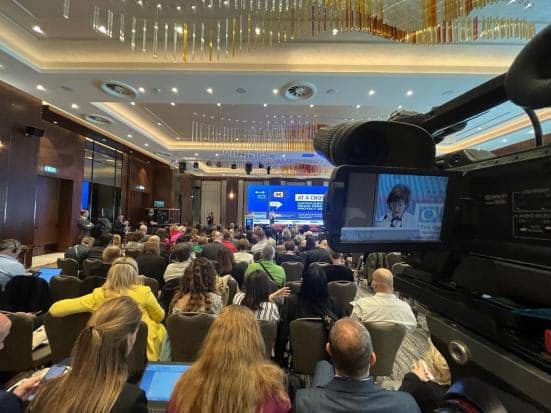Reports of gender-based violence (GBV) against girls and women there have increased by 37 per cent during the first three months of the year, compared to the same period a year ago, according to the GBV coordination group for North Kivu.
More than 38,000 cases of GBV were reported for all of 2022 in North Kivu alone. In most cases, survivors reported being attacked by armed men and displaced men in and around the camps.
Attacked where they should be safe
“Deeply vulnerable children and women, seeking refuge at camps are instead finding themselves facing more abuse and pain,” said UNICEF’s Representative in DRC, Grant Leaity.
“The surge in sexual violence against children is horrifying, with reports of some as young as three years old having been sexually exploited. This wake-up call should shock, sicken, and jolt us all into action.”
Since the beginning of March 2022, over 1.16 million people have been displaced by clashes between parties to the conflict in North Kivu.
Almost 60 per cent of those displaced are living in overcrowded sites and collective shelters just outside of Goma, the provincial capital, where risks of sexual violence are extremely high.
Exploitation at hundreds of sites
UNICEF is also aware of the very high levels of sexual exploitation of children at more than 1,000 sites in and around displacement camps.
The impact on the physical and mental health of girls and women is immeasurable and long-lasting, said the agency. Approximately one in four survivors of sexual violence need specialized medical and psychological support, according to the GBV coordination group.
Injured UN peacekeepers in DRC from Morocco being transported for treatment after they were attacked in Kiwanja, Rutshuru North Kivu by the armed group M23.
UNICEF and partners boost support
UNICEF has stepped up its activities to prevent and respond, the agency said, providing essential medical and psychosocial services to affected girls and women at the four largest displacement camps near Goma.
In collaboration with the Provincial Division of Social Affairs and in partnership with Heal Africa, the agency has also established safe spaces for girls and women within displacement camps, where psychologists, professional social workers and trained community-based para-social workers identify and care for children and women in need, referring them for additional services as required.
To protect girls and women, UNICEF is urgently calling for a significant scale-up of services to prevent and respond to sexual violence in and around displacement camps; a halt to the large-scale sexual exploitation of girls and women; and the dismantling of the identified sites in and around camps where sexual exploitation occurs.
UNICEF is also appealing to donors so that more direct aid can be given to those stranded in displacement camps.
“We call on the government, local authorities, partners and donors to take all necessary actions to end this situation immediately, to shut down known sites of sexual exploitation, and to protect women and girls who have already been victims of displacement,” added Mr. Leaity.
The UN continues to provide humanitarian aid to people displaced by armed clashes in North Kivu province in the eastern DRC.














